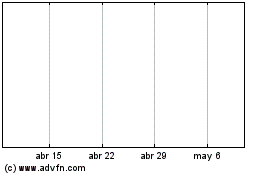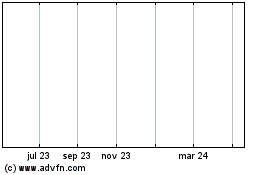By Suzanne McGee
What a difference three months can make in the world of
top-performing mutual-fund managers.
At the end of 2018, "the entire portfolio felt like a bunch of
losers," says Dennis Lynch, head of the Counterpoint Global team at
Morgan Stanley.
Mr. Lynch's assessment was overly bleak. Despite the market
collapse in the waning months of 2018, two of the funds of which
Mr. Lynch is lead portfolio manager still were among the six best
actively managed U.S.-stock funds at the end of the fourth quarter,
according to our continuing survey.
Now, thanks in part to the dramatic market recovery so far this
year, Morgan Stanley's funds and other growth-oriented mutual funds
are faring even better.
"We were taking advantage of the selloff to add to some of our
favorite ideas," he says of the weakness in stocks at the end of
last year, "but we were surprised when they rebounded so
rapidly."
The magnitude and speed of the market's recovery helped three
Morgan Stanley mutual funds land in the top six in The Wall Street
Journal's first quarterly Winners' Circle contest of 2019.
Top laurels, meanwhile, were again won by two Fidelity
Investments funds that focus on growth companies. Fidelity Advisor
Series Growth Opportunities Fund (FAOFX) repeated as the
best-performing stock fund over the previous 12 months. (Under our
contest rules, funds must be diversified U.S.-stock funds, actively
managed, with at least $50 million in assets and a record of no
less than three years.) The fund posted a 12-month return of 38% as
of March 31. Fidelity Advisor Growth Opportunities (FAGOX), was
again No. 2 with 33.5%.
The three standout Morgan Stanley funds in the contest, all
overseen by Mr. Lynch and his team, were Morgan Stanley
Institutional Fund Trust Discovery Portfolio (MPEGX) with a return
of 30.87%, Morgan Stanley Insight Fund (CPOBX) with 28.98%, and
Morgan Stanley Institutional Fund Inception Portfolio (MSSGX) with
27.32%, which put it in sixth place, a bare 0.10 percentage point
behind fifth-place winner Virtus Zevenbergen Innovative Growth
Stock Fund (SAGAX). The $180 million Virtus fund is led by
subadvisers Joe Dennison and Anthony Zackery of Seattle-based
Zevenbergen Capital. (The three Morgan Stanley funds changed their
names in February; they used to have midcap, multicap and
small-cap, respectively, in their names. The Virtus fund formerly
was labeled RidgeWay.)
Readers shouldn't treat this as a list of recommended funds.
Often, the managers recognized in our contest are reaping the
fruits of investments made several years ago and have endured
periods of underperformance en route to their moment in the
spotlight. It is also worth noting, this month, that our
top-performing fund can't be accessed directly by investors;
instead, it is an underlying investment in Fidelity Freedom Funds
and certain asset-management programs. Our rankings exclude passive
investment vehicles, sector funds, funds that use leverage to
amplify returns or manage risk, and quantitative funds that employ
screens to select their holdings.
The key to outperforming their peers in the first quarter was
the ability to demonstrate old-fashioned investor discipline.
Several of this quarter's top-ranked managers, for example, took
some of their profits off the table during the bull market's gains
in the first nine months of 2018. When prices began to plummet in
the final months of the year, they saw it as buying opportunity,
focusing on a stock's fair value or its growth potential, rather
than the market volatility.
Fidelity's Kyle Weaver, manager of the first- and second-place
funds now in two consecutive quarters, says he used the year-end
downturn to add to positions in companies with the best and
fastest-growing business models. He notes that the fourth-quarter
selloff was particularly painful for Carvana, the Tempe,
Ariz.-based online car retailer that went public in the spring of
2017; while the Fidelity funds at one point had a sixfold return on
their original investment, at the end of 2018 the return was only
threefold, Mr. Weaver says. "You could argue that it got ahead of
itself," he says. He sold some of the shares, and redeployed the
gains in other areas, he says, but when the price fell still lower,
he boosted his holdings.
"My thesis remained intact," Mr. Weaver says, "and the gap
between its price and its intrinsic value had widened out
significantly." Carvana's share price nearly doubled between the
end of the fourth quarter and March 31, soaring to $58.06 from
$32.71.
Big turnarounds like that helped propel this quarter's
top-performing fund managers into the Winners' Circle, as core
growth-stock holdings resumed their roles as market darlings. These
types of companies, some of the winning managers say, offer
products or services that are new to the market or enable other
businesses to operate more efficiently or effectively.
A case in point is Twilio, a major contributor to at least the
two best performing Morgan Stanley funds in the contest. This
cloud-based communication-services company provides the platforms
that allow app users to transmit or receive phone calls, texts or
other messages. Twilio "powers a lot of the messaging that occurs
in everyday applications," Mr. Lynch says. "For example, when you
use a ride-sharing company and get a notification telling you when
the car will arrive, Twilio is providing that communications
function."
Zevenbergen's Mr. Dennison offers an example of a health-care
company that he sees as providing an innovative service with huge
potential. Some of the biggest gains over the past 12 months to the
Virtus Zevenbergen portfolio, he says, have come from Exact
Sciences, the molecular diagnostics company whose stool-testing
product enables doctors and patients to test for colon cancer
without the need for invasive colonoscopies.
Morgan Stanley's Mr. Lynch and investors in some of his growth
funds also have benefited from biotech and health-care stocks, such
as Inspire Medical Systems, developer of what remains the only
FDA-approved implantable device designed to address sleep
apnea.
"There's a large market for this," Mr. Lynch says, arguing that
demand will grow as patients and doctors become more aware of the
device and as more insurance companies cover it. Another medical
investment by the Morgan Stanley team that has done well is
Intuitive Surgical, a leading robotic-surgery platform. "As a
percentage of total surgeries, their penetration is still very
low," Mr. Lynch says.
Mr. Dennison and Mr. Zackery, meanwhile, are moving further into
what they believe will be part of the next generation of medical
treatments. They have invested in one of the early cannabis
companies to go public, Tilray, a Seattle-based firm that is a
major player in the Canadian medical-marijuana market.
"As growth managers, it is impossible to ignore an industry that
is moving from prohibition to serving a market that may be worth
$500 billion," Mr. Dennison says. His team likes to back
early-stage companies, like Tilray, that are fresh to the public
markets. Tilray, he says, "has done well at building strong
relationships with both customers and regulators, and brands that
can build that trust will be the biggest winners."
As the past six months have demonstrated so vividly, there can
be no certainty about what lies ahead either for these managers or
their portfolio holdings. "The upside is not what it was" at the
beginning of the year," says Mr. Lynch. "We don't have the same
optimism about prospective returns."
That is secondary, however, to his confidence In his core
process: identifying companies that will benefit disproportionately
from disruptive change.
"We don't try to manage what's going to happen in the next three
to six months," Mr. Lynch says, "but instead try to make long-term
decisions, to find unique and underappreciated companies that are
capable of generating longer-term value. That's easy to talk about,
but harder to do."
Ms. McGee is a writer in New England. She can be reached at
reports@wsj.com.
(END) Dow Jones Newswires
April 07, 2019 22:26 ET (02:26 GMT)
Copyright (c) 2019 Dow Jones & Company, Inc.
Morgan Stanley (NYSE:MWD)
Gráfica de Acción Histórica
De Abr 2024 a May 2024

Morgan Stanley (NYSE:MWD)
Gráfica de Acción Histórica
De May 2023 a May 2024
